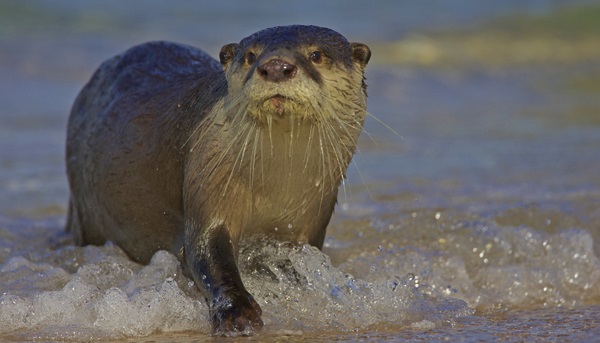
African Clawless Otter, Aonyx capensis, called El??g??d?? in Yoruba is the most widely distributed otter species in Africa. The generic name, aonyx, which means “not-clawed”, refers to this otter species’ clawless forelimbs. They have thick, smooth fur with almost silky underbellies. Chestnut in color, they are characterized by white facial markings that extend downward towards their throat and chest areas. Paws are partially webbed with five fingers, and no opposable thumbs. Body length is between 73 and 95 cm, and tail length is between 41 and 67 cm. They weigh between 10 and 16 kg. They are brown in color with thick, smooth fur. This semiaquatic mammal feed on fish, frogs, crabs and worms. It has adept hand-like forefeet, which enables it to easily grapple with its prey. The Cape clawless otter is most active in twilight. During the day, Aonyx capensis shelters in underground burrows, under rocks, or under roots of tree.
Gestation lasts approximately 63 days. Litters range in size from 1 to 3 pups, which become independent and sexually mature in a year. They live for up to 12 years in the wild. International trade of the African clawless otter was prohibited in Nigeria military government’s a decree of 1985.





















